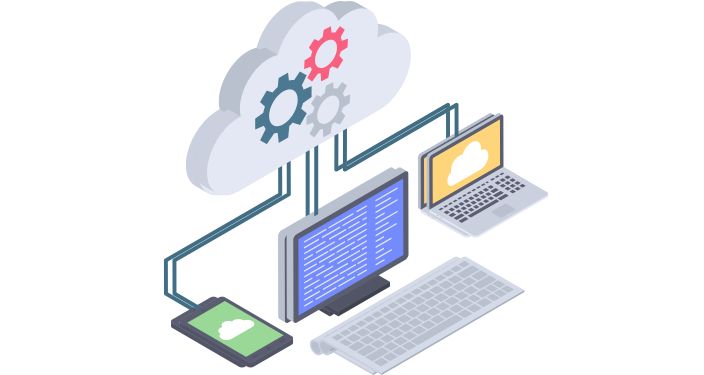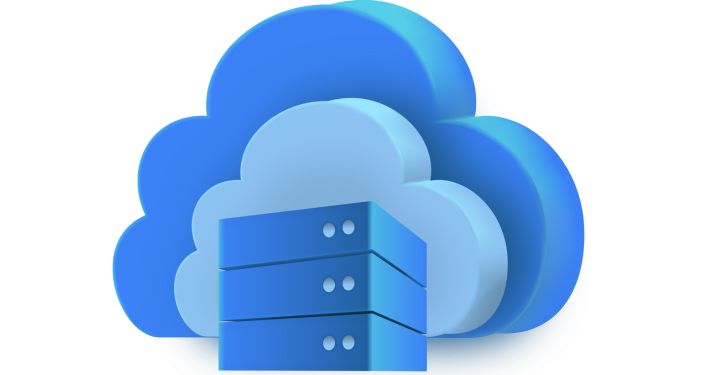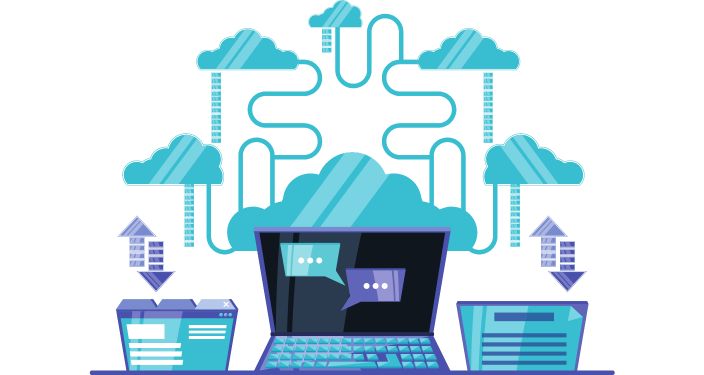Keeping your data safe in the cloud feels like a big challenge. Cloud network security is crucial for protecting your information from cyber threats.
This guide will show you best practices and solutions to strengthen your cloud security measures effectively.
Keep reading to make your cloud environment safer today!
Table of Contents
What is Cloud Network Security?
Cloud Network Security refers to the protection of data, applications, and infrastructure involved in cloud computing. It is important for preventing unauthorized access and ensuring data integrity.
Definition
Cloud network security involves various measures to protect the confidentiality, integrity, and availability of cloud services. This includes policies, technologies, applications, and controls that protect data, applications, and associated infrastructure from threats.
These security controls are designed to mitigate risks in the cloud environment.
Understanding the shared responsibility model is crucial in cloud network security. This model outlines how security responsibilities are divided between the cloud service provider and the user.
It emphasizes that both parties play a significant role in ensuring comprehensive protection against cyber threats like malware, intrusion attacks, and data breaches.
Importance
Transitioning from the definition of cloud network security, it is crucial to highlight the significance of robust cloud security measures. In today’s ever-evolving realm of cyber threats, implementing effective cloud network security measures not only safeguards sensitive data and applications but also underpins the trust and confidence in consuming cloud services at scale.
Recognizing the shared responsibility model along with employing log management and continuous monitoring are key best practices that organizations should meticulously adhere to for safeguarding against emerging threats.
Staying up to date with modern tools and best practices for secure cloud networking is crucial in ensuring data protection and compliance with regulatory standards in an era where cyber threats continue to evolve.
Benefits
Cloud network security offers numerous benefits, including safeguarding data, applications, and infrastructure against emerging threats. Implementing robust cloud security protocols helps in ensuring the confidentiality, integrity, and availability of cloud services by deploying multifactor authentication (MFA), encryption, firewall protection, intrusion detection systems, access control mechanisms as per compliance regulations.
With a comprehensive approach to cloud security strategies and solutions such as DNS filtering and user access privilege management based on best practices for securing internet-facing services through micro-segmentation techniques while navigating complexities or multi-cloud environments.
Furthermore, it is crucial to understand that cloud network security not only mitigates risks but also builds confidence in consuming cloud services at scale. Compliance with modern tools tailored towards ever-evolving threats can effectively protect against unauthorized access or cyber-attacks comprehensively.
Challenges of Cloud Network Security
Cloud network security faces challenges in multi-cloud environments and dealing with the lack of context.

Multi-cloud environments
Multi-cloud environments involve the use of multiple cloud computing and storage services in a single network architecture. According to recent studies, an average enterprise uses approximately 5 different public and private clouds.
This can lead to complexities in data management and security as each cloud environment may have its own unique security protocols. As organizations increasingly embrace multi-cloud strategies, it is crucial to ensure that strong security measures are implemented across all platforms to mitigate potential risks.
The shared responsibility model applies differently within multi-cloud environments as each cloud service provider has distinct guidelines for user access privileges and MFASSO. It is imperative for organizations to thoroughly understand the variations in cloud security frameworks and controls when dealing with different providers.
Additionally, staying up-to-date with modern tools and best practices for cloud network security is vital for effectively safeguarding against evolving threats in multi-cloud scenarios.
Lack of context
Navigating the complexities of multi-cloud environments often leads to a lack of context, hampering effective cloud network security. Categorizing cloud locations and services is crucial for understanding their current state and identifying areas for improvement.
Furthermore, comprehending the shared responsibility model and utilizing log management and continuous monitoring are key best practices for maintaining robust cloud security standards.
It’s essential to stay updated with modern tools and best practices to protect against ever-evolving threats in the realm of cybersecurity.
In an era where cloud security threats are constantly evolving, it’s imperative to implement meticulous measures such as categorizing cloud locations, understanding the shared responsibility model, and employing log management and continuous monitoring.
These steps underpin comprehensive strategies aimed at safeguarding data and applications within multi-cloud environments. By tailoring security controls towards these vital aspects, organizations can ensure stringent protection against emerging cyber threats while complying with established cloud security guidelines.
Shared responsibility
Navigating the complexities of cloud security brings us to the concept of shared responsibility. This model underpins cloud security best practices, emphasizing that both cloud service providers and users have a role in ensuring security.
Understanding this model is crucial for implementing effective cloud security policies and controls. Cloud security solutions are designed to enhance protection by clearly defining who is responsible for securing different aspects of the cloud environment.
Cloud network security requires meticulous attention towards shared responsibilities, as it directly impacts data and application protection. By categorizing cloud locations and services while understanding the shared responsibility model, organizations can tailor their approach to ensure comprehensive protection.
It’s not merely about deploying tools; it’s about adopting best practices that unlock the secrets of secure cloud usage.
Best Practices for Cloud Network Security
Deploy zero-trust networks, secure internet-facing services, micro-segment access, and understand shared responsibilities. Read more for a secure cloud network!

Deploying zero-trust networks
Zero-trust networks are vital for cloud security. They eliminate the concept of trust based on location or user identity. Instead, they authenticate and authorize every attempt to connect to resources in the network.
Zero-trust networks help to reduce the risk of unauthorized access and potential breaches by providing continuous validation through strict access controls and micro-segmentation.
Implementing zero-trust networks is crucial due to an increase in cyber threats targeting cloud environments. By shifting from traditional perimeter-based security models to zero-trust architectures, organizations can better protect their data and applications in the cloud.
This approach aligns with the shared responsibility model for cloud security, ensuring that each component within a network is verified before granting access—making it a key best practice in safeguarding against evolving threats.
Securing internet-facing services
Securing internet-facing services is vital for cloud network security. It involves implementing robust controls and defenses to protect against external threats and vulnerabilities.
CloudGuard Network Security offers comprehensive protection for internet-facing services, ensuring secure access and preventing unauthorized entry. This solution is essential in safeguarding data and applications from potential cyber-attacks, ultimately enhancing overall cloud network security.
Moving on to the next section about micro-segmenting access, let’s explore how this practice further strengthens cloud network security.
Micro-segmenting access
Micro-segmenting access is a crucial best practice for cloud network security. By dividing the network into smaller segments and imposing strict access controls, organizations can enhance security within their cloud environments.
This technique limits lateral movement for potential attackers and reduces the impact of any breaches. Cloud security controls are bolstered through micro-segmentation, which also aids in compliance efforts by ensuring that sensitive data only remains accessible to authorized users or services.
It’s an effective strategy for reinforcing the confidentiality, integrity, and availability of cloud services.
Implementing micro-segmentation provides granular control over access rights and significantly reduces the attack surface within cloud networks. CloudGuard Network Security offers robust micro-segmentation capabilities to mitigate risks associated with unauthorized access attempts while maintaining high-availability requirements for critical applications and workloads in multi-cloud environments.
Organizations leveraging these solutions gain tailored control over network traffic flows while fortifying their overall cloud network security posture.
Understanding shared responsibilities
Transitioning from micro-segmenting access to understanding shared responsibilities, the shared responsibility model is a critical concept in cloud network security. It outlines the division of security duties between cloud service providers and customers.
This model requires organizations to handle certain security measures while the cloud provider manages others, ensuring comprehensive protection of data and applications. Categorizing cloud locations and services also plays a pivotal role in determining the extent of each party’s responsibilities, making it essential for organizations to have a clear understanding of this model to effectively secure their cloud environments.
Understanding shared responsibilities: The shared responsibility model is an important concept in cloud network security that delineates the division of security duties between providers and customers.
Categorizing cloud locations and services is crucial for determining each party’s respective responsibilities under this model, ensuring comprehensive protection of data and applications.
Cloud Network Security Solutions
Explore CloudGuard Network Security and other innovative cloud-based security solutions to enhance your network’s defense. Mitigate risks in multi-cloud environments with advanced SOAR and SDLC security implementations.

CloudGuard Network Security
CloudGuard Network Security is a critical component in safeguarding cloud environments. It provides robust protection for data, applications, and infrastructure in the cloud. Offering comprehensive security measures, CloudGuard encompasses features such as threat prevention, network visibility, and intelligent automation to ensure the confidentiality, integrity, and availability of cloud services.
By leveraging CloudGuard Network Security, organizations can mitigate risks associated with multi-cloud environments and adhere to the shared responsibility model effectively.
With its advanced capabilities, CloudGuard Network Security aligns with modern best practices for securing internet-facing services and micro-segmenting access within cloud networks.
Additionally, it facilitates risk mitigation in multi-cloud environments while offering cloud-based security solutions that are crucial for maintaining a secure cloud environment. Remarkably designed to enhance overall cloud security posture using advanced SOAR (Security Orchestration Automation Response) and SDLC (Secure Development Lifecycle) integration capabilities.
Transitioning to the next section – “Cloud-based Security”, let’s delve into the intricate details of fortifying your organization’s defenses against emerging threats in a dynamic digital landscape.
Cloud-based security
Cloud-based security is crucial for protecting data, applications, and infrastructure in the cloud. It involves policies, technologies, and controls to ensure confidentiality, integrity, and availability of cloud services.
Understanding the shared responsibility model is vital in implementing effective cloud security best practices. Log management and continuous monitoring are key tools for maintaining robust cloud network security.
Staying updated with modern tools is essential to protect against evolving threats.
Implementing CloudGuard Network Security can significantly enhance cloud-based security measures. SOAR and SDLC security solutions offer effective mitigation of risks in multi-cloud environments.
By deploying these strategies, organizations can fortify their cloud network security against emerging threats.
SOAR and SDLC security
Transitioning from cloud-based security to SOAR and SDLC security, it’s crucial to consider Security Orchestration, Automation, and Response (SOAR) as an approach for integrating security tools and processes.
Implementing SOAR helps in automating incident response activities, improving operational efficiency, and reducing the mean time to detect and respond to security incidents. Software Development Life Cycle (SDLC) security involves embedding proactive security measures throughout the development process to identify vulnerabilities early on.
Incorporating secure coding practices into the SDLC ensures that applications are built with robust defenses against emerging threats.
Incorporating SOAR into security operations can streamline incident handling by automating repetitive tasks and providing a centralized view for better decision-making. Similarly, infusing SDLC with robust security measures ensures that potential vulnerabilities are identified and resolved at various stages of application development.
Mitigating risks in multi-cloud environments
Mitigating risks in multi-cloud environments is crucial as organizations increasingly utilize multiple cloud platforms. This approach helps them leverage the unique capabilities of each provider while spreading risk.
According to recent studies, 81% of enterprises operate in a multi-cloud environment, making it imperative to implement robust security measures across all platforms. It’s essential to prioritize consistent security policies and controls across various cloud providers.
Additionally, utilizing solutions like CloudGuard Network Security can provide comprehensive protection and visibility across diverse cloud environments, addressing the challenges posed by managing security in a multi-cloud setting effectively.
Furthermore, understanding the shared responsibility model is vital for mitigating risks in multi-cloud scenarios. Each provider has distinct parameters regarding data protection and infrastructure security, underlining the importance of clarity with regard to responsibilities within each platform.
Embracing this practice enables organizations to allocate resources for enhanced security posture comprehensively. Employing modern tools that offer centralized management and enforcement of policies across different clouds further strengthens an organization’s ability to mitigate potential threats efficiently.
Conclusion
Cloud network security is crucial to safeguard against emerging threats and ensure the confidentiality, integrity, and availability of cloud services. Best practices such as deploying zero-trust networks and securing internet-facing services are essential for mitigating risks in multi-cloud environments.
Understanding shared responsibilities and staying up to date with modern tools is paramount for effective protection against evolving threats. CloudGuard Network Security and other cloud-based solutions provide the necessary controls to keep data and applications secure in the complex realm of cloud security.
General Facts
- Cloud network security encompasses various security controls and practices that mitigate risks and ensure the confidentiality, integrity, and availability of cloud services.
- The guide provides a high-level blueprint of different approaches and best practices for addressing an organization’s cloud security threats.
- Before improving cloud security, it is important to categorize cloud locations and services to determine their current state and identify areas for improvement.
- Cloud network security is essential to safeguard against emerging threats and provide the confidence needed to consume cloud services at scale.
- Cloud security refers to the policies, technologies, applications, and controls that protect data, applications, and associated infrastructure.
- The shared responsibility model is an important concept to understand when it comes to cloud security best practices.
- Log management and continuous monitoring are important tools and practices for maintaining cloud security.
- It is important to stay up to date with modern tools and best practices for cloud network security to effectively protect against evolving threats.
- Cloud security best practices are crucial for keeping data and applications secure in the cloud environment.
- Categorizing cloud locations and services, understanding the shared responsibility model, and using log management and continuous monitoring are key best practices for cloud security.
FAQs
What is cloud network security?
Cloud network security is a way to keep data safe on the internet. It uses special practices and solutions to protect information.
Why do we need best practices for cloud network security?
Best practices help us know the smartest ways to keep our online information safe from hackers and other risks.
Can anyone use these cloud network security solutions?
Yes, anyone who keeps data online can use these solutions, whether it’s for personal stuff or for a big company.
How often should I check my cloud network security?
It’s good to check your security often to make sure everything is up-to-date and working right against new threats.
See Also: What is an XCV Panel? Discover the Latest Tech Buzzword





